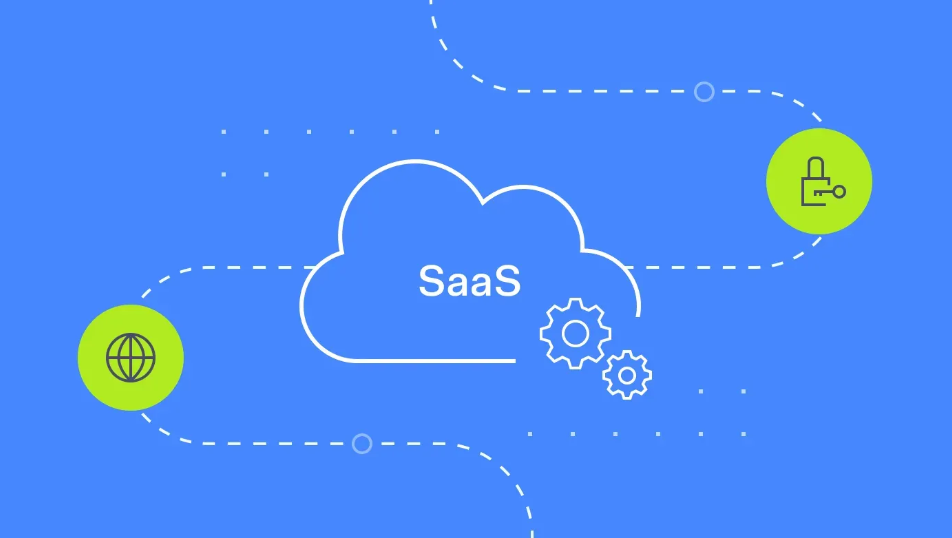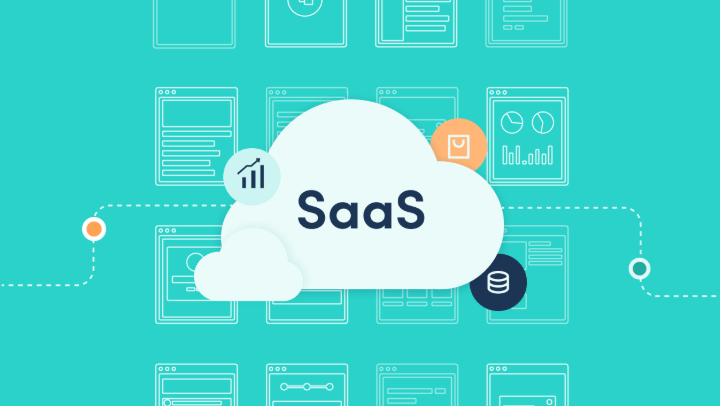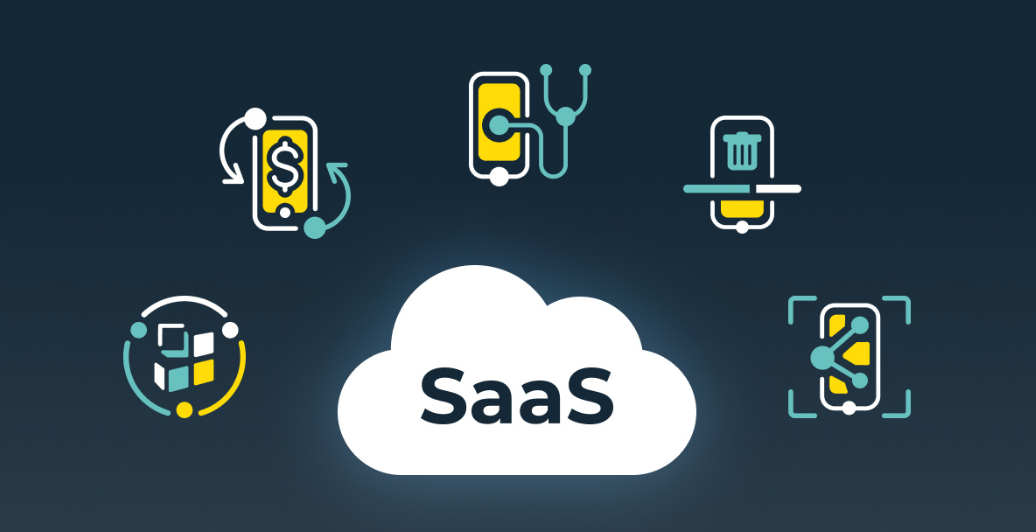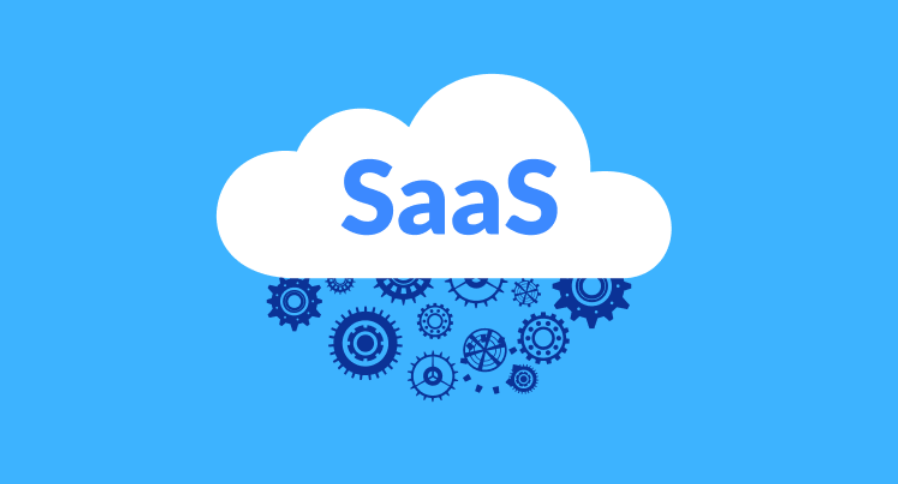Overview of SaaS
Software as a Service (SaaS) represents a significant shift in how businesses use software. Unlike traditional methods that require physical installation on company servers or individual devices, SaaS delivers software solutions via the Internet. With this delivery model, organizations can leverage fairly robust applications without the responsibility of managing massive infrastructures and/or IT personnel.
Like many other software business models, subscription is one of the key pointers to SaaS. Businesses can select from various subscription plans, tailoring their choice to fit their needs and budget constraints. This payment method for telecommunication services allows for avoiding high initial costs and managing costs more effectively.
This distant character of SaaS offers several operational benefits for the business. Because applications are accessed online, service providers handle software updates and maintenance. Firms can always access the latest features and security patches without manual effort. Third, SaaS solutions help offer excellent scalability to cater to business expansion needs and flexibility often lacking in other solutions.
Eight benefits associated with SaaS will enhance the firm’s flexibility. There is one proviso, and it is that recognizing that employees can use the internet as a means to gain access to the software, they can be located anywhere. This is especially helpful in today’s world, where work is becoming decentralized and with many employees working from home, more so on remote work.
We understand that SaaS promotes a contemporary approach to using software to enhance business operations and productivity, flexibility in usage, cost-effectiveness, and simplicity of operations.

The Mechanics of SaaS
SaaS operates through a cloud-based delivery model, where users access applications over the Internet rather than installing them on individual devices. This setup streamlines the deployment process and ensures all users use the latest software version. SaaS leverages centralized servers managed by the service provider, which handle the computing power, data storage, and network bandwidth required to run the software efficiently.
A distinguishing feature of SaaS is its subscription-based pricing. Companies can choose a plan depending on the usage required and the affordability that aligns with the plan developed for the software. These subscriptions involve updates, maintenance, and customer care F&A departments, which don’t require specialized in-house IT.
The third important benefit of SaaS solutions is their flexibility or capability to scale. As a company grows, it can easily adjust its subscription plan to accommodate more users or increase data needs without substantial capital investment. This flexibility is particularly beneficial for businesses experiencing rapid growth or fluctuating demand.
Moreover, the multi-tenant architecture commonly used in SaaS allows multiple customers to securely share the same application infrastructure. The result is that each customer’s data stays independent and personal to him while achieving optimal resource utilization. Utilized providers remove all technical troubles, relieving businesses from numerous operational affairs besides IT.
SaaS offers excellent integration facilities and is highly scalable and flexible. Almost all SaaS solutions include APIs and other integration features that maintain the continuity of connections to the already developed systems. Such compatibility is useful for building a better framework for a technology solution in the broader sense.
Benefits of SaaS for Companies
SaaS has many benefits, making it a popular choice among businesses of any size. One of the primary advantages is that it is cheap. It also means lower capital costs, which would be required to buy and maintain the actual physical hardware that the clients run, and lower staff costs, as the need for extensive IT staffing would be minimized. The subscription model also enables business cash inflow since costs are frequently distributed over time.
Another advantage of the active collection is the possibility of its updates and scalability. SaaS providers manage the software updates, meaning end users are shielded from having to download new editions of the software the providers add to the system. As for the same, we can say the same thing about the expansion as a company grows, and SaaS can grow with it, and when implemented, it is well equipped to grow with the business.
The last two benefits are related to SaaS availability and accessibility. Since the software can be accessed anytime the employee has an internet connection; employees can use it regardless of where they are or whether they are always in the office. This level of access improves teamwork and efficiency, as team members do not have to be in the same office to work effectively.
Another positive aspect of SaaS is that the solution offers many integration possibilities that combine all the systems and help work more effectively. Almost all modern SaaS applications are shipped with APIs and other integration APIs so that they become nice and tidy stacked upon applications and make the overall technology environment more unified and cohesive.
Finally, the issue of reliability with many SaaS providers means that businesses can be assured that the services are available whenever required, thereby reducing and eliminating downtime.
Typical Challenges and Factors to Consider
SaaS offers many advantages, but businesses should know specific challenges and factors. Data security and privacy are top priorities because the data could be stored off-site, increasing the potential for a breach. One should evaluate a provider regarding their security measures, encoder, and compliance with the general laws.
The other important variable is the reliability of the Internet. Since SaaS applications are accessed online, a stable internet connection is necessary for uninterrupted access. Organizations should determine the redundancy level of their network and consider an ample backup mechanism to ensure limited service disruption.
There are usually constraints on how much customization one can have on their device. SaaS is also more flexible, but conversely, it often does not have specific organizational demands regarding solutions. In particular, it is essential to determine whether the software can be customized to give a specific set of APIs/parameters.
Vendor lock-in is another potential issue. Migrating data and switching providers can be challenging and costly. Evaluating the ease of data export and the terms of service agreements can help mitigate this risk.
Lastly, cost management requires attention. Subscription-based pricing offers predictability, but costs can accumulate as the number of users and additional features increase. It mentioned that organizations may need to monitor the subscription plans and their usage where costs may be incurred, and he elaborates the idea by stating that Organizations should monitor the frequency of subscription plans as it could be a saving.
By looking at these aspects, growth points in SAAS can be perfectly enhanced; on the other hand, possible drawbacks can be avoided.
Well-Known SaaS Solutions
Several SaaS solutions have become essential tools for businesses across various industries. For instance, Salesforce’s most well-known capability is managing customer relationships and supplying tools for sales reps, marketers, and customer service employees. Microsoft 365 is another popular option; it brings a set of office tools: Word, Excel and PowerPoint, which can be accessed through a cloud platform.
As a messaging platform for team collaboration, Slack is also accepted for communication and project management applications that work with channels and availability to other apps. Each of these solutions provides an example of the broad range of SaaS applications and their core purpose: for various general business purposes.
Many SaaS solutions are specific to the industry. For example, Shopify is an all-in-one solution for creating retailers’ online stores; its operation is almost effortless. QuickBooks is an application designed to address most of the accounting issues for small businesses and some routine work, e.g., preparing invoices and calculating employee salaries and taxes.
Examples of SaaS tools include HubSpot for inbound marketing, Zoom for video communication and Zendesk for customer support. The above applications have specific characteristics of tackling business requirements, and hence, SaaS is ideal for various operation functionalities.
Selecting the Best SaaS Provider
Selecting the best SaaS provider requires a thorough evaluation of several key factors. Begin by examining the service features and the support options each provider offers. Ensure the software includes the tools and integrations your business requires and that customer support is responsive and available.
Second, understand how often the provider sends statements and its general credibility. Check for reviews, customers’ testimonies, and cases to determine favourable feedback and the standard of a given provider. It is also vital for the provider to be assessed in terms of financial strength, for it reflects the capacity of a provider to discharge its services over some time in the market.
Privacy, data security, and compliance considerations must never be overlooked. It’s recommended that the measures the provider is taking regarding data protection and the methods applied to encrypt stored data be analyzed. This will help you to ensure that your important information is safe from the hackers who are key threats to most secure systems.
Furthermore, for comprehensibility, practicality, and training or orientation, the software must be nimble enough and have enough prior cueing and tools to teach your workers how to use it productively. This can go a long way in reducing inadequate acquisition time and optimizing the operation’s performance.
Last, the extent or level of total acquisition cost must be evaluated. Per a subscription model, expenses are predictable, but one must be careful with extra costs like higher subscriptions, additional services, or more users. Regularly reviewing and adjusting your subscription plan can help manage these costs effectively.
Upcoming Trends in SaaS
The SaaS market is still young and on the threshold of other transformations, and during the next few years, several trends will develop. AI and ML are prepared to take SaaS solutions to the next level of automation and prognosis so that companies can run way better. These technologies are helpful because they may deliver different software experiences to clients’ requirements and increase general workflow and satisfaction.
The third trend is the shifting demand towards vertical SaaS solutions delivered to meet certain industries’ requirements. Such applications include one or a few specific functions that solve some extraordinary problems in business processes, which are more valuable than the general ones.
Other SaaS strategies are also increasingly popular: combined SaaS models are also being sought after. These include on-premise and cloud integration solutions to give clients more freedom and power. Thus, this concept provides the possibility to utilize both models’ advantages and guarantee the maximum rates and protection.
Better integration capabilities are now regarded as more and more valuable as more and more companies require tight coupling between distinct software tools. Therefore, developing API and middleware solutions will enable better integration and form a more balanced structure for the technological environment.
Finally, user experience is still a matter of concern. The trends indicate that providers focus more on the application and providing a better interface and support. These are the advances that are going to take the use and the possibility of SaaS to the next years ahead.



